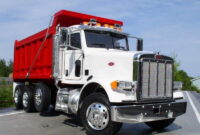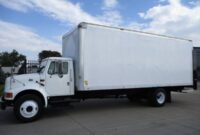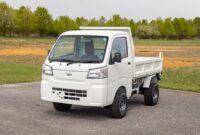Best Snow Plow For 3/4 Ton Truck: A Comprehensive Guide pickup.truckstrend.com
For property owners, businesses, and contractors facing the annual challenge of heavy snowfall, a 3/4 ton truck often serves as the backbone of their winter operations. Trucks like the Ford F-250, Ram 2500, Chevrolet Silverado 2500HD, and GMC Sierra 2500HD are built with enhanced capabilities – superior payload, robust frames, and heavy-duty suspensions – making them ideal candidates for snow removal. However, the effectiveness and longevity of both your truck and your plowing efforts hinge entirely on selecting the best snow plow for your 3/4 ton truck. This isn’t a one-size-fits-all decision; it requires a deep understanding of your truck’s specifications, your plowing needs, and the various plow options available. Choosing correctly ensures efficient snow clearing, minimizes wear and tear on your vehicle, and maximizes your return on investment.
Understanding 3/4 Ton Truck Capabilities for Plowing
Best Snow Plow For 3/4 Ton Truck: A Comprehensive Guide
Before even considering plow types, it’s paramount to understand what your 3/4 ton truck can handle. While these trucks are undeniably "heavy-duty" compared to their 1/2 ton counterparts, they still have limits.
- Payload Capacity & GVWR: Your truck’s Gross Vehicle Weight Rating (GVWR) and payload capacity are listed on the driver’s side door jamb sticker. The GVWR is the maximum permissible weight of the fully loaded truck (including passengers, cargo, and the plow). The payload capacity is the maximum weight your truck can carry, subtracting its curb weight. The plow’s weight, including its mounting system, must fall within this capacity, ideally leaving a margin for fuel, driver, and any additional equipment.
- Front Axle Weight Rating (FAWR): This is arguably the most critical number for plowing. The FAWR specifies the maximum weight your front axle can safely support. Since the plow mounts directly to the front of the truck, a significant portion of its weight (and the snow it carries) will bear down on the front axle. Exceeding the FAWR can lead to compromised steering, braking, premature suspension wear, and unsafe operation. Always check the plow’s weight against your truck’s FAWR.
- Heavy-Duty Components: 3/4 ton trucks are equipped with stronger frames, transmissions, cooling systems, and suspension components specifically designed to handle heavier loads and more strenuous work. This makes them far more suitable for commercial or extensive residential plowing than a 1/2 ton truck, which can quickly be overloaded and damaged by the demands of snow removal.
Types of Snow Plows for 3/4 Ton Trucks
The market offers several distinct types of snow plows, each with its own advantages and ideal applications for a 3/4 ton truck.

-
Straight Blade Plows:
- Description: The most common and often most affordable type, featuring a single, straight steel or poly blade.
- Pros: Simplicity, ease of operation, lower cost, excellent for pushing snow in a straight line or windrowing. Lighter weight than V-plows, often making them a good match for trucks closer to their FAWR limits.
- Cons: Less versatile for cutting through deep drifts or back-dragging effectively in tight spaces.
- Ideal for: Long driveways, smaller parking lots, and general snow clearing where efficiency in tight maneuvers is not the primary concern.
-
V-Plows (V-Blades):
- Description: Consist of two independent wings that can be angled in various configurations (V-shape, scoop, straight, angle).
- Pros: Exceptional versatility. The V-shape is excellent for cutting through deep, hardened drifts. Scooping allows for high-volume snow moving, while angling functions like a straight blade. Improved back-dragging capabilities.
- Cons: Heavier, more complex hydraulic systems, higher initial cost. Require more precise operation.
- Ideal for: Areas with heavy, frequent snowfall, large parking lots, commercial properties, and situations requiring maximum maneuverability and efficiency.
-
Pusher Plows (Box Plows):
- Description: Large, box-shaped attachments designed to move massive volumes of snow in a single pass. While traditionally for larger machinery, truck-mounted versions exist for 3/4 ton and 1-ton trucks.
- Pros: Highly efficient for clearing large, open areas like expansive parking lots. Can move more snow per pass than straight or V-plows.
- Cons: Not suitable for intricate areas, driveways, or tight turns. Very heavy, potentially challenging for a 3/4 ton truck without significant front-end reinforcement.
- Ideal for: Large, open commercial lots where speed and volume are critical. Less common for residential use.
Blade Materials:
- Steel: Durable, robust, excellent for breaking up compacted snow and ice. Heavier and more prone to rust if not maintained.
- Poly (Polyethylene): Lighter, non-stick surface allows snow to slide off more easily, reducing drag and fuel consumption. More forgiving on surfaces, less prone to rust. Can be less rigid than steel.
Trip Systems:
- Trip Edge: The bottom cutting edge trips backward over obstacles, protecting the plow and truck. Common on straight blades.
- Full Trip: The entire blade pivots back over obstacles. Offers more comprehensive protection and is common on V-plows.
Key Factors When Choosing a Snow Plow
Making the right choice involves weighing several critical factors beyond just plow type.
- Weight Compatibility (Reiterated Importance): As discussed, this is paramount. Never exceed your truck’s FAWR and GVWR. A good dealer will help you match a plow to your specific truck’s VIN to ensure compatibility.
- Plowing Needs & Environment:
- Residential vs. Commercial: Residential users might prioritize ease of use and lower cost, while commercial operators need durability, efficiency, and advanced features.
- Property Size & Type: Large, open areas benefit from wider plows or V-plows. Tight driveways or intricate paths might require more maneuverable options.
- Snowfall Volume & Type: Heavy, wet snow requires a robust plow. Light, fluffy snow might allow for lighter options.
- Blade Width: The plow’s width should be wider than your truck’s track width, especially when angled, to ensure you don’t leave a trail of unplowed snow. For 3/4 ton trucks, common widths range from 8 feet to 9.5 feet. A wider plow clears more snow but is heavier and can be less maneuverable.
- Mounting System:
- Quick-Attach Systems: These are the industry standard, allowing for quick and easy attachment and detachment (often minutes). This is crucial if you use your truck for other purposes.
- Under-Carriage Mount: Ensures weight is distributed along the truck’s frame, not just the bumper.
- Hydraulics and Controls: Look for reliable, responsive hydraulic systems. Electric-over-hydraulic systems are common, offering smooth operation. Controls typically come as joysticks or handheld controllers. Ergonomics and ease of use are important for long hours of plowing.
- Durability and Construction: Inspect the plow’s construction:
- Ribbing: More ribs on the back of the blade indicate greater strength.
- Pivot Points: Should be robust and easily serviceable.
- Cutting Edge: Replaceable cutting edges are a must.
- Corrosion Protection: Powder coating or other protective finishes are essential for longevity in harsh winter conditions.
- Lighting: Plows often obscure the truck’s headlights. Integrated plow lights are critical for safe night plowing and are often a legal requirement. Ensure they are bright and well-positioned.
- Accessories: Consider options like plow shoes (to raise the cutting edge and protect surfaces), deflectors (to direct snow away from the windshield), wings (to increase plowing width), and curb guards.
Top Snow Plow Brands for 3/4 Ton Trucks
Several reputable brands consistently produce high-quality snow plows suitable for 3/4 ton trucks. While specific models vary, these brands are known for their durability, innovation, and support:
- BOSS Snowplow: Known for robust construction and advanced features like the SmartHitch2 and SmartLight 3 LED lighting. Their V-plows (e.g., DXT, XT) are very popular for commercial use.
- Western Products: A long-standing name in the industry, offering a wide range of straight, V-plows, and pushers. Their UltraMount system is highly regarded for quick attachment.
- Meyer Products: One of the oldest plow manufacturers, offering reliable straight blades (e.g., Drive Pro, Super-V3) and V-plows with strong hydraulic systems.
- Fisher Engineering: Sister company to Western, sharing many design principles but with distinct aesthetics. Known for durable plows and user-friendly controls.
- SnowDogg (by Buyers Products): Gaining popularity for their lightweight yet durable poly blades and stainless steel options, offering good performance and corrosion resistance.
Installation, Maintenance, and Operation Tips
Proper care and technique extend the life of your plow and truck.
- Pre-Season Checklist:
- Inspect all hydraulic lines, cylinders, and fluid levels.
- Check electrical connections for corrosion and ensure lights work.
- Examine the cutting edge for wear; replace if necessary.
- Grease all pivot points and moving parts.
- Verify all fasteners are tight.
- Installation: Always follow the manufacturer’s specific instructions for mounting the plow frame and connecting hydraulics and electrical systems. Ensure the truck’s suspension is properly set (e.g., Torsion bars adjusted, air bags inflated if used) to achieve proper plow height and ground clearance.
- Operation Tips:
- Start Slow: Especially when engaging snow, avoid ramming.
- Clear in Sections: Don’t try to move too much snow at once. Take smaller bites.
- Plowing Patterns: Learn efficient patterns like windrowing (pushing snow to the side) or back-dragging (pulling snow away from garage doors/buildings).
- Avoid Obstacles: Mark obstacles like curbs, hydrants, and landscaping before the first snowfall.
- Listen to Your Truck: Pay attention to engine strain, transmission shifting, and suspension behavior. If it sounds or feels labored, you’re pushing too hard.
- Post-Plowing Care:
- Clean the plow thoroughly to remove salt and debris.
- Lubricate all moving parts.
- Store the plow on a level surface, preferably indoors or under cover, to prevent rust and weather damage.
- Truck Maintenance: Remember that plowing puts significant stress on your truck. Ensure regular oil changes, check transmission fluid, inspect brakes, and monitor tire pressure. Consider heavier-duty shocks or helper springs if your truck frequently sags.
Common Challenges and Solutions
Even with the best equipment, plowing presents challenges.
- Challenge: Truck Sag/Excessive Front-End Weight.
- Solution: While a 3/4 ton truck is built for it, heavy plows can still cause sag. Helper springs or air bags (like Firestone Ride-Rite or Air Lift LoadLifter) can help maintain proper ride height and reduce suspension fatigue. Ensure these additions don’t encourage exceeding your FAWR.
- Challenge: Reduced Visibility.
- Solution: Ensure plow lights are properly aligned and functional. Keep your windshield clean and defrosted. Consider LED auxiliary lights on your truck or plow for enhanced illumination.
- Challenge: Plow Getting Stuck/Damaged on Obstacles.
- Solution: Thoroughly mark all obstacles before the first snow. Use a trip-edge or full-trip plow system, which is designed to protect against impact. Plow slowly in unfamiliar areas.
- Challenge: Hydraulic System Malfunctions.
- Solution: Regular checks of hydraulic fluid levels are crucial. Use the correct type of hydraulic fluid. If issues persist (slow movement, no movement), check for leaks, air in the lines, or electrical problems. Consult a professional if unsure.
- Challenge: Premature Wear on Truck Components.
- Solution: Adhere strictly to weight limits. Perform routine maintenance on your truck’s front end, suspension, and transmission. Consider upgrading components like heavy-duty alternators or larger batteries for the increased electrical load.
Estimated Price Table for Best Snow Plow For 3/4 Ton Truck
Please note that these prices are estimates and can vary significantly based on brand, specific model, features, material, dealer, installation costs, and geographical location. Always obtain a direct quote for your specific truck and desired plow.
| Plow Type | Typical Brands (Examples) | Estimated Price Range (Plow Only) | Key Features / Notes


